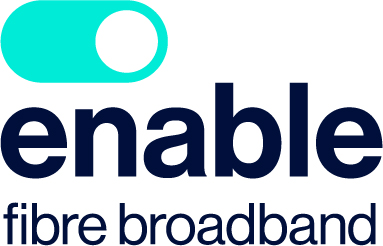

Enable Networks Limited

Canterbury Region, New Zealand
June 2023
Telecommunications
Service with Minor Environmental Footprint
New Zealand
As the kaitiaki (guardian) of essential connectivity infrastructure, Enable is committed to ensuring that its community enjoys maximum value from its world-class fibre broadband services. Enable delivers fibre broadband to more than 160,000 customers across greater Ōtautahi Christchurch providing a connection to the digital world. It supports innovation and market reach for local businesses, connects friends and family, supports teaching and learning opportunities, and provides access to essential online services and entertainment. Enable is also focused on delivering strong financial returns to the community and adding additional value by addressing community needs in a truly sustainable way. In 2021, Enable paid its first dividend ($18m) to the people of Christchurch. Enable also helps to eliminate digital inequity supporting Ōtautahi Community Housing Trust (ŌCHT) to provide connectivity for digitally excluded tenants. It also provides free Wi-Fi in the central city, in-conjunction with the Christchurch City Council. Enable is working to be a net zero emissions business by 2030, driving down direct emissions and expanding its sustainability goals to partners and suppliers to reduce indirect emissions.
Overall B Impact Score
Governance 12.6
Governance evaluates a company's overall mission, engagement around its social/environmental impact, ethics, and transparency. This section also evaluates the ability of a company to protect their mission and formally consider stakeholders in decision making through their corporate structure (e.g. benefit corporation) or corporate governing documents.
What is this? A company with an Impact Business Model is intentionally designed to create a specific positive outcome for one of its stakeholders - such as workers, community, environment, or customers.
Workers 34.9
Workers evaluates a company’s contributions to its employees’ financial security, health & safety, wellness, career development, and engagement & satisfaction. In addition, this section recognizes business models designed to benefit workers, such as companies that are at least 40% owned by non-executive employees and those that have workforce development programs to support individuals with barriers to employment.
What is this? A company with an Impact Business Model is intentionally designed to create a specific positive outcome for one of its stakeholders - such as workers, community, environment, or customers.
Community 32.7
Community evaluates a company’s engagement with and impact on the communities in which it operates, hires from, and sources from. Topics include diversity, equity & inclusion, economic impact, civic engagement, charitable giving, and supply chain management. In addition, this section recognizes business models that are designed to address specific community-oriented problems, such as poverty alleviation through fair trade sourcing or distribution via microenterprises, producer cooperative models, locally focused economic development, and formal charitable giving commitments.
What is this? A company with an Impact Business Model is intentionally designed to create a specific positive outcome for one of its stakeholders - such as workers, community, environment, or customers.
Environment 11.4
Environment evaluates a company’s overall environmental management practices as well as its impact on the air, climate, water, land, and biodiversity. This includes the direct impact of a company’s operations and, when applicable its supply chain and distribution channels. This section also recognizes companies with environmentally innovative production processes and those that sell products or services that have a positive environmental impact. Some examples might include products and services that create renewable energy, reduce consumption or waste, conserve land or wildlife, provide less toxic alternatives to the market, or educate people about environmental problems.
Customers 3.3
Customers evaluates a company’s stewardship of its customers through the quality of its products and services, ethical marketing, data privacy and security, and feedback channels. In addition, this section recognizes products or services that are designed to address a particular social problem for or through its customers, such as health or educational products, arts & media products, serving underserved customers/clients, and services that improve the social impact of other businesses or organizations.